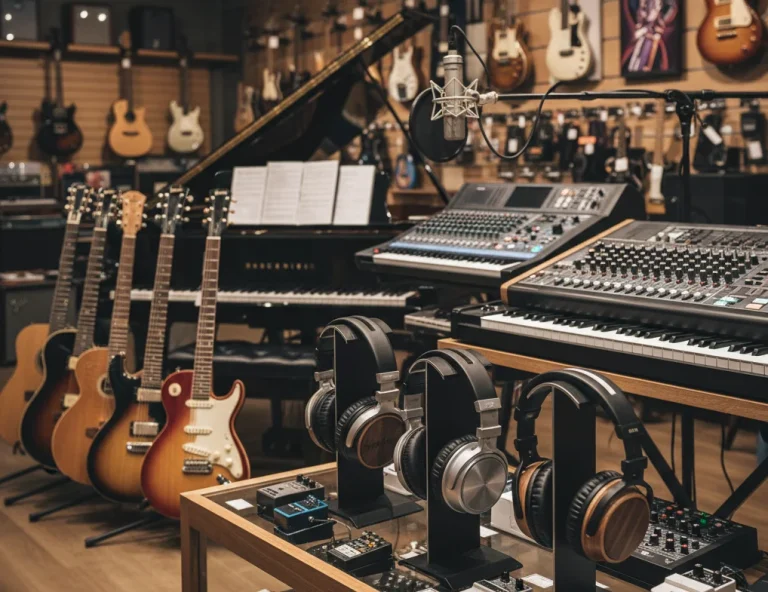All Topics
- Alchemizing Music Concepts for Students
- Artist Spotlight
- artium gift card
- Artium Maestros
- Artium News
- buying guide
- Carnatic Music
- Devotional Music
- Editorials by Ananth Vaidyanathan
- Film Music
- Guitar
- Hindustani Classical Music
- Indian Classical Music
- Indian Folk Music
- Insights
- Instruments
- Karaoke Singing
- Keyboard
- Kids Music
- maestros
- Music Education
- Music for Kids
- Music Industry
- Music Instruments
- Music Legends
- Music Theory
- Music Therapy
- Piano
- piano guide
- Success Stories
- Tamil Film Music
- Telugu Film Music
- Time Theory
- Tools
- Uncategorized
- Vocal Singing
- Vocals
- western classical music
- western music
- Western vocal music
How to Find Your Vocal Range?
How to Find Your Vocal Range?

Table of Contents
Imagine singing with the effortless precision of Sonu Nigam or bringing the emotive range of Asha Bhosle into your songs. If you have often marvelled at their ability to hit both low and high tones with such ease, then you are not alone. The vocal range of a singer is like their musician’s fingerprint mastering, which can take a lot of time. This is why finding your vocal range is often among the first steps towards perfecting your craft.
If you have struggled when trying a high note or found a song that feels too low, then chances are you weren’t singing within your vocal range. If you understand your vocal range precisely, then improvisation becomes very easy, and it also makes the singing more enjoyable. This insight also prevents you from straining your vocal cords too much, which might hinder practice. In this blog, we will break down how to find the range that’s right for you.
If you’re really excited to begin your journey in Vocal Singing, start with a free trial lesson today!
What is Vocal Range?
Before we dive into it, we must first understand what vocal range is. Vocal range refers to the full span of notes that a person can produce comfortably. Everything between the lowest note and the highest note that you can sing (without putting stress on your voice) is your vocal range.
This vocal range becomes a key characteristic of every singer’s voice and also helps determine and guide the type of songs one can attempt with perfection. This range can also help decide on the musical instruments that can be best paired with your voice, further enhancing your expression and performance. To help you understand it a bit better, the vocal range has been divided into three distinct sections based on specific vocal registers.
- Low Notes
Low notes are often associated with chest voice or a lower part of your vocal range, where most people naturally speak. While singing in this register, you can feel the resonance in your chest area. Mastering the low-note chest voice is crucial for creating a rich, grounded sound and singing low notes easily and clearly.
- Middle Notes
The middle range of notes is also sometimes called the mixed voice because it blends the qualities of both the chest and the head voices. This middle range is often the most comfortable spot for most singers, as it can provide a balance between the chest voice and the head voice. Practising and perfecting your mixed voice is often considered the key to maintaining control and flexibility across your vocal range.
- High Notes
The upper range of your vocals generally consists of high notes. They are called so because when you sing in a high voice or a falsetto, you can feel the vibrations in your head and skull. Even though it tends to produce lighter and more delicate sounds, skilled singers like Freddie Mercury can make it extremely powerful. This kind of singing is especially important for Pop, Opera and Western classical music.
Understanding Your Vocal Type
There are many vocal types based on certain characteristics, such as vocal range, timbre, tone quality and tessitura (which means the most comfortable part of your range). Understanding your strengths and weaknesses can help you develop techniques suited to your voice. To help you explore genres that match your natural strengths, here is a list of the most common types of vocals.
For Females
- The soprano, also called the highest female voice, typically ranges from C4 (middle C) to A5 or even higher. This kind of voice is often used as the lead voice in classical music. Lata Mangeshkar and Shreya Ghoshal are some famous examples of this voice type.
- The mezzo-soprano or mid-range female voice generally ranges from A3 to F5 and has a warmer sound. When compared to the sopranos, the mezzos are also much richer and more versatile in different genres. Some famous singers in the mid-range include Sunidhi Chauhan and Adele.
- The lowest female voice is called the alto, and this type of vocal ranges from F3 to D5, making them great for group harmonies and lower notes. Beyoncè and Asha Bhosle are famous for their deep, full-bodied tones and excel in the lower range of female voices.
For Males
- Tenor is generally considered the highest male voice, and it ranges from B2 to G4. The tenors are often known for the bright and ringing quality of their voices. This is why they are often the leading male voice in Opera and grand musicals. Some famous singers adored for their tenor in India are Arijit Singh and Kishore Kumar, both legends in their eras.
- The mid-range male voice ranges from E2 to C4 and is often known as the baritone as it balances the tenor and the bass aspects of your voice. SP Balasubrahmanyam and Sonu Nigam are great examples of this type of vocal range, and their versatility is unmatched in both high and low notes.
- The lowest male voice, also called the bass, generally ranges from E2 to C4 and features the deepest and darkest vocal tones. Kumar Sanu and Barry White are famous examples of this voice type and can easily elevate choral arrangements and classical music settings.
How to Find Your Vocal Range?
Now, with the above discussion in mind, you must have a slight understanding of what kind of music you would like to recreate. To discover your precise range, all you need to do is sing from your lowest note to the highest note and record which notes come the easiest to you.
After this, you must also identify your tessitura, as in this range you can sing at ease for extended periods. Knowing this is extremely important for performances and long practice sessions. You should also consider your timbre to find out if your voice is light, warm or rich. Try to listen to the quality of your voice on an external recorder and try to narrow down your voice type.
Lastly, you can also consider consulting a vocal coach if you are still unsure. An experienced vocal coach can suggest some exercises which can easily help you pinpoint while assisting you with valuable feedback as well. So, this is how to find your vocal range in an effective way.
Conclusion
Now that you understand your vocal range and type, you can take the next step to develop your singing skills. If you’re new to singing or you’ve been singing for a while, you can join our vocal music classes. These classes can teach you how to sing better and reach higher notes. Our range of music courses also includes training in film music in all prominent languages.
We also have dedicated online vocal coaches for ghazals, Hindustani and Carnatic classical courses that are designed by maestros such as Sonu Nigam and Shubha Mudgal. If you’re looking for flexible options, we offer professional guidance from the comfort of your home as we provide online vocal lessons on our platform. With the right training, you’ll be able to make the most of your unique voice!






